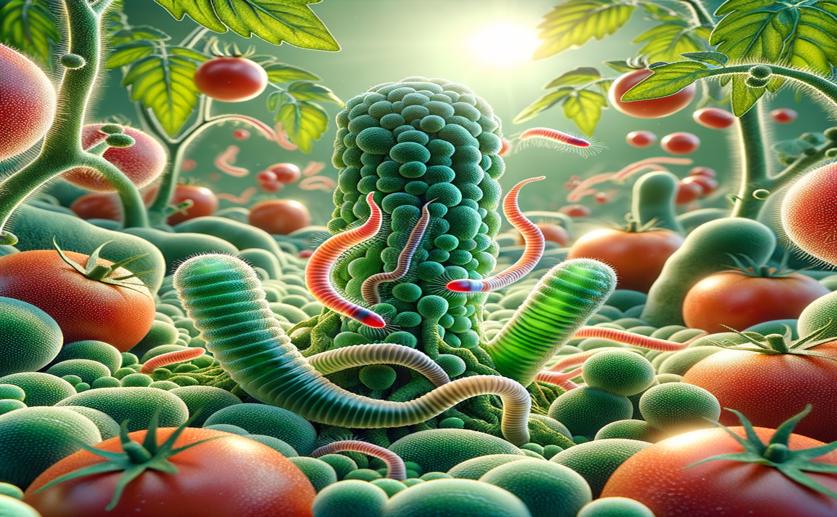
Bacterial Communities Found with Nematodes in Tomato Crops
Jenn Hoskins
7th June, 2024

Image Source: Natural Science News, 2024
Key Findings
- The study examined Acrobeles complexus nematodes and their bacterial communities in tomato fields in South Africa
- These nematodes are associated with a diverse range of bacteria, including Dechloromonas sp., Acidovorax temperans, and Lactobacillus ruminis
- The abundance of A. complexus nematodes is negatively correlated with clay content and soil phosphate levels, and positively correlated with soil sand content
AgricultureBiochemPlant Science
References
Main Study
1) Bacterial communities associated with Acrobeles complexus nematodes recovered from tomato crops in South Africa.
Published 6th June, 2024
https://doi.org/10.1371/journal.pone.0304663
Related Studies
2) Bacterial communities associated with Zeldia punctata, a bacterivorous soil-borne nematode.
3) Soil microbiomes and climate change.
4) External and Internal Microbiomes of Antarctic Nematodes are Distinct, but More Similar to each other than the Surrounding Environment.



 5th June, 2024 | Jim Crocker
5th June, 2024 | Jim Crocker